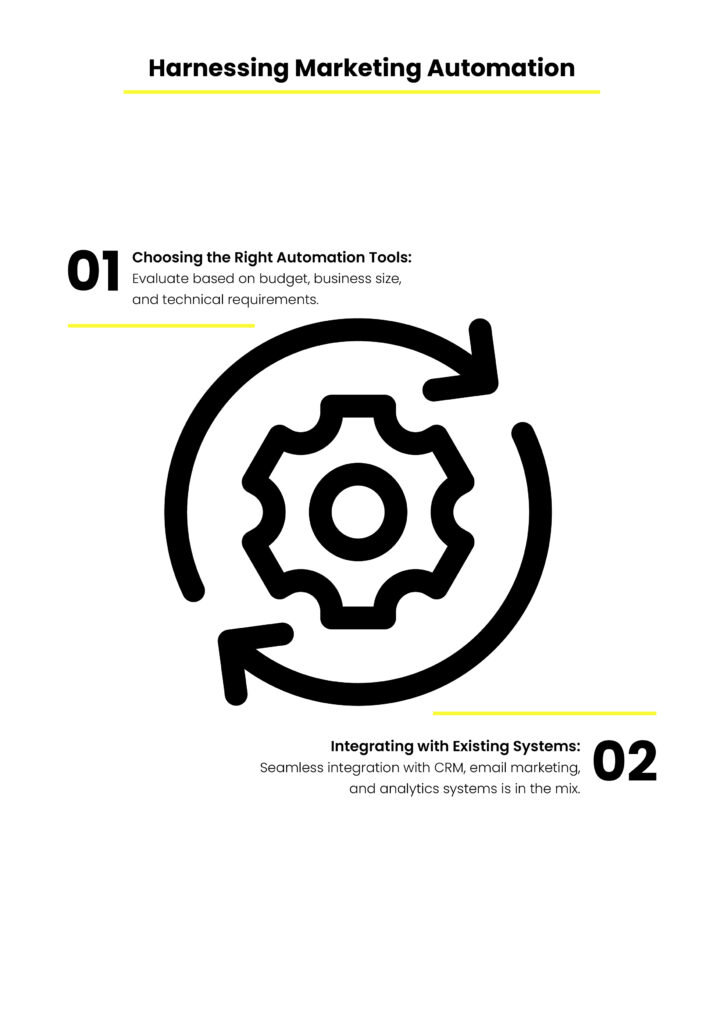In the recent digital age, marketing automation has possessed humanised criteria which, however unsettling, has become the beacon of productivity and business civilisation as we know it. Whether it’s the imbued machine controller, Al assistant or the average loyalty segment controlling the reigns, the input of machine learning into marketing automation is vast.
Marketing automation, aside from generative forums, has dynamically split productivity runs by double the amount, efficiency quarters, and a hyper-personalised segment that attributes every stage of the advertising funnel set up in marketing campaigns.
This blog will highlight how to harness marketing automation for enhanced efficiency by spotlighting the backdrop, benefits and functions of this front-line core system.
Benefits of Marketing Automation
Marketing automation excels in spotlighting consumer stakes that derive the Customer Lifetime Value (CLV) segment in efficient durations. While this is not only accurate, relative benefits in productivity, personalisation and data-driven decision-making formulate the robustness of advertising endeavours.
- Time-Saving and Scalability
Marketing automation streamlines tasks, allowing marketers to divert their attention to strategic planning and creative endeavours. It scales marketing efforts efficiently, accommodating growth without requiring more resources.
- Improved Lead Nurturing
Automation fosters personalised communication with leads, guiding them through the buyer’s journey with relevant content. This targeted approach improves conversion rates by delivering timely messages tailored to each prospect’s needs.
- Enhanced Personalisation
Automation allows for tailored messaging and campaigns based on individual preferences, enhancing customer experiences. Segmenting audiences by demographics, interests, or past interactions enables targeted campaigns that resonate with specific audience segments.
- Data-Driven Decision Making
Automation tools offer insights into campaign performance, audience engagement, and customer behaviour through data analytics. Marketers analyse key metrics and trends to make informed decisions and optimise strategies for maximum ROI.
Key Features and Capabilities
Marketing automation has a definite outpost within its overdrive, facilitating operations in end-to-end processes. Whether it’s audit reroutes, publication latency or scheduled prototypes, marketing automation showcases the dynamic threshold of technology.
- Email Marketing Automation
Automated email campaigns allow businesses to send targeted messages to subscribers based on triggers such as sign-ups, purchases, or website visits. Features like drip campaigns, personalised content, and A/B testing help optimise email marketing efforts for better engagement and conversion.
- Social Media Automation
Automation tools enable scheduling, publishing, and monitoring of social media posts across multiple platforms. By automating routine tasks like content sharing, monitoring mentions, and responding to comments, businesses can maintain a consistent online presence and engage with their audience more effectively.
Implementing Marketing Automation

Marketing automation is often compatible with enterprise needs, resources and humanised input that avert the system from becoming obsolete. With the right tools and integration, you can harness the full power of automation in the following ways.
- Choosing the Right Automation Tools
Selecting the right automation platform depends on factors such as budget, business size, technical requirements, and specific marketing needs. Businesses should research and evaluate different tools based on features, integrations, user interface, customer support, and scalability to find the best fit for their requirements.
- Integrating with Existing Systems
Integration with existing CRM, email marketing, and analytics systems is crucial for seamless data flow and efficient operation. Businesses should ensure compatibility and smooth integration between automation tools and other platforms to maximise functionality and avoid data silos.
Best Practices for Success
By effectively handling marketing automation, it would be unwise to allow autonomous segmentation and data analysis independently. With a diverse, thorough mix of testing and protocol assimilation, businesses are better poised for the essence of marketing dynamics wielded under automation.
- A/B Testing for Optimisation
A/B testing, also known as split testing, compares two versions of a campaign or webpage to determine which performs better. By testing different elements such as subject lines, call-to-action buttons, or ad creatives, businesses can identify the most effective strategies and optimise their marketing efforts for better results.
- Continuous Monitoring and Analysis
Continuous monitoring of key metrics and performance indicators helps businesses track the effectiveness of their automation efforts in real time. Regular analysis of data and metrics enables marketers to identify trends, spot opportunities, and make data-driven decisions to optimise campaigns and strategies.
Future Trends in Marketing Automation
As technology continues to advance, the future of marketing automation holds exciting possibilities. Emerging trends are poised to revolutionise how businesses engage with their audience and streamline their marketing processes.
- AI and Machine Learning Integration
The integration of artificial intelligence (AI) and machine learning (ML) technologies into automation platforms enables more advanced predictive analytics, personalised recommendations, and automated decision-making. AI-powered chatbots, predictive lead scoring, and dynamic content optimisation are among the emerging applications driving the future of marketing automation.
- Chatbot and Voice Assistant Adoption
Chatbots and voice assistants are increasingly being used to automate customer interactions, answer queries, and provide personalised assistance across digital channels. As natural language processing (NLP) and voice recognition technologies advance, chatbots and voice assistants will play a more significant role in automating customer service, sales, and support functions.
Conclusion
Marketing automation presents a multitude of advantages for companies aiming to streamline their marketing operations, enhance efficiency, and achieve superior outcomes. By leveraging automation tools and strategies, businesses can save time, enhance personalisation, and make data-driven decisions to achieve their marketing objectives. As technology continues to evolve, embracing automation and staying abreast of emerging trends will be critical for businesses to maintain a competitive edge and succeed in the dynamic digital landscape.
